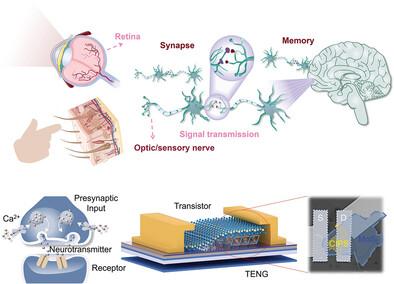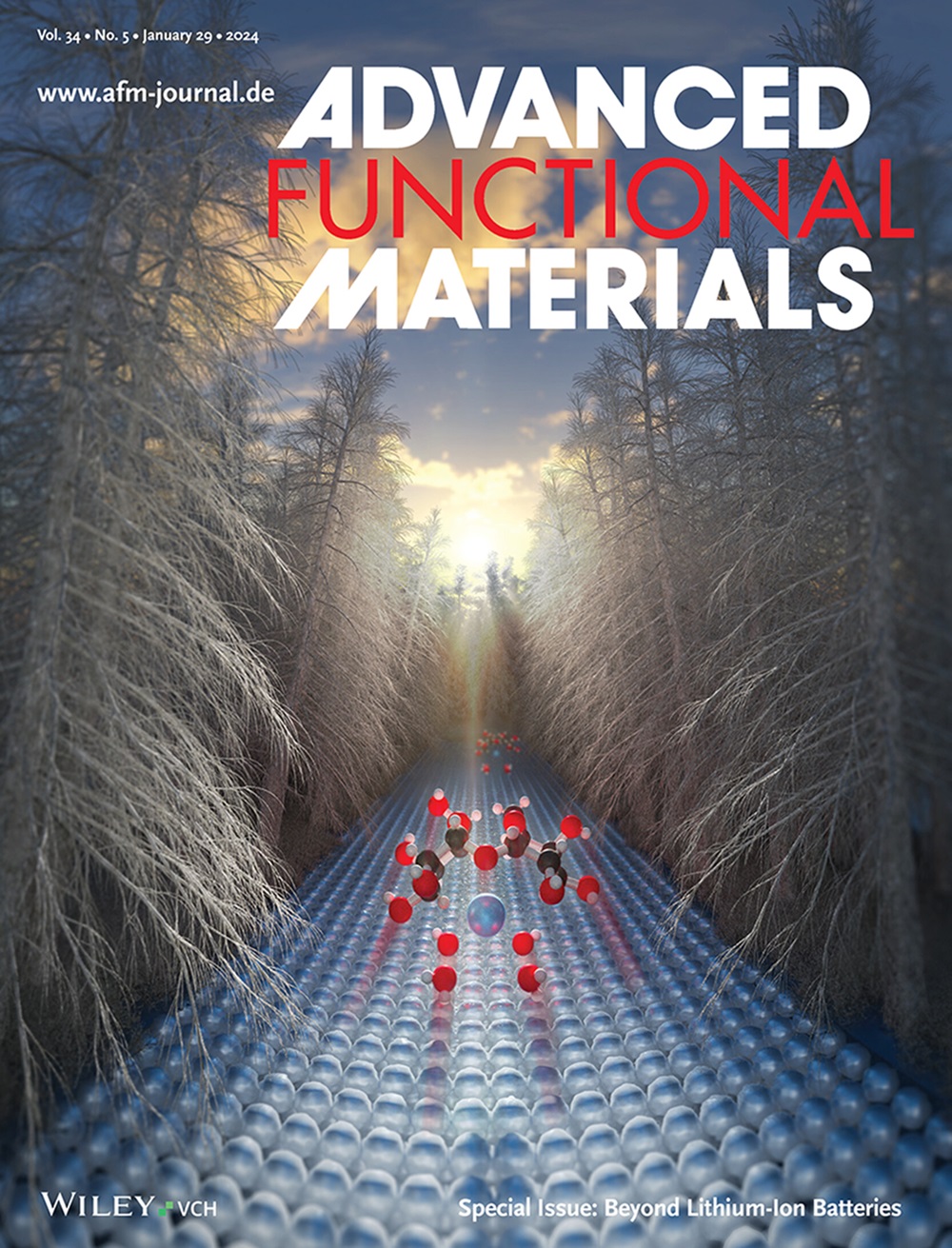Brain-inspired Multimodal Synaptic Memory via Mechano-photonic Plasticized Asymmetric Ferroelectric Heterostructure
IF 18.5
1区 材料科学
Q1 CHEMISTRY, MULTIDISCIPLINARY
引用次数: 0
Abstract
Neuromorphic devices capable of emulating biological synaptic behaviors are crucial for implementing brain-like information processing and computing. Emerging 2D ferroelectric neuromorphic devices provide an effective means of updating synaptic weight aside from conventional electrical/optical modulations. Here, by further synergizing with an energy-efficient synaptic plasticity strategy, a multimodal mechano-photonic synaptic memory device based on 2D asymmetric ferroelectric heterostructure is presented, which can be modulated by external mechanical behavior and light illumination. By integrating the asymmetric ferroelectric heterostructured field-effect transistor and a triboelectric nanogenerator, the mechanical displacement-derived triboelectric potential is ready for gating, programming, and plasticizing the synaptic device, resulting in superior electrical properties of high on/off ratios (> 107), large storage windows (equivalent to ≈95 V), excellent charge retention capability (> 104 s), good endurance (> 103 cycles), and primary synaptic behaviors. Besides, optical illumination can effectively synergize with mechanoplasticity to implement multimodal spatiotemporally correlated dynamic logic. The demonstrated multimodal memory synapse provides a facile and promising strategy for multifunctional sensory memory, interactive neuromorphic devices, and future brain-like electronics embodying artificial intelligence.

通过机械光子可塑非对称铁电异质结构实现脑启发式多模态突触记忆
能够模拟生物突触行为的神经形态器件对于实现类脑信息处理和计算至关重要。除了传统的电/光调制外,新兴的二维铁电神经形态设备为更新突触权重提供了有效手段。在这里,通过与高能效的突触可塑性策略进一步协同,介绍了一种基于二维非对称铁电异质结构的多模态机械光子突触记忆装置,它可以通过外部机械行为和光照进行调制。通过整合非对称铁电异质结构场效应晶体管和三电纳米发生器,机械位移产生的三电势可用于突触器件的门控、编程和塑化,从而实现高通断比(107)、大存储窗口(相当于≈95 V)、优异的电荷保持能力(104 s)、良好的耐久性(103 个周期)和主要突触行为等卓越的电学特性。此外,光照可与机械塑性有效协同,实现多模态时空相关动态逻辑。所展示的多模态记忆突触为多功能感官记忆、交互式神经形态设备以及未来体现人工智能的类脑电子设备提供了一种简便而有前景的策略。
本文章由计算机程序翻译,如有差异,请以英文原文为准。
求助全文
约1分钟内获得全文
求助全文
来源期刊

Advanced Functional Materials
工程技术-材料科学:综合
CiteScore
29.50
自引率
4.20%
发文量
2086
审稿时长
2.1 months
期刊介绍:
Firmly established as a top-tier materials science journal, Advanced Functional Materials reports breakthrough research in all aspects of materials science, including nanotechnology, chemistry, physics, and biology every week.
Advanced Functional Materials is known for its rapid and fair peer review, quality content, and high impact, making it the first choice of the international materials science community.
文献相关原料
| 公司名称 | 产品信息 | 采购帮参考价格 |
|---|
 求助内容:
求助内容: 应助结果提醒方式:
应助结果提醒方式:


